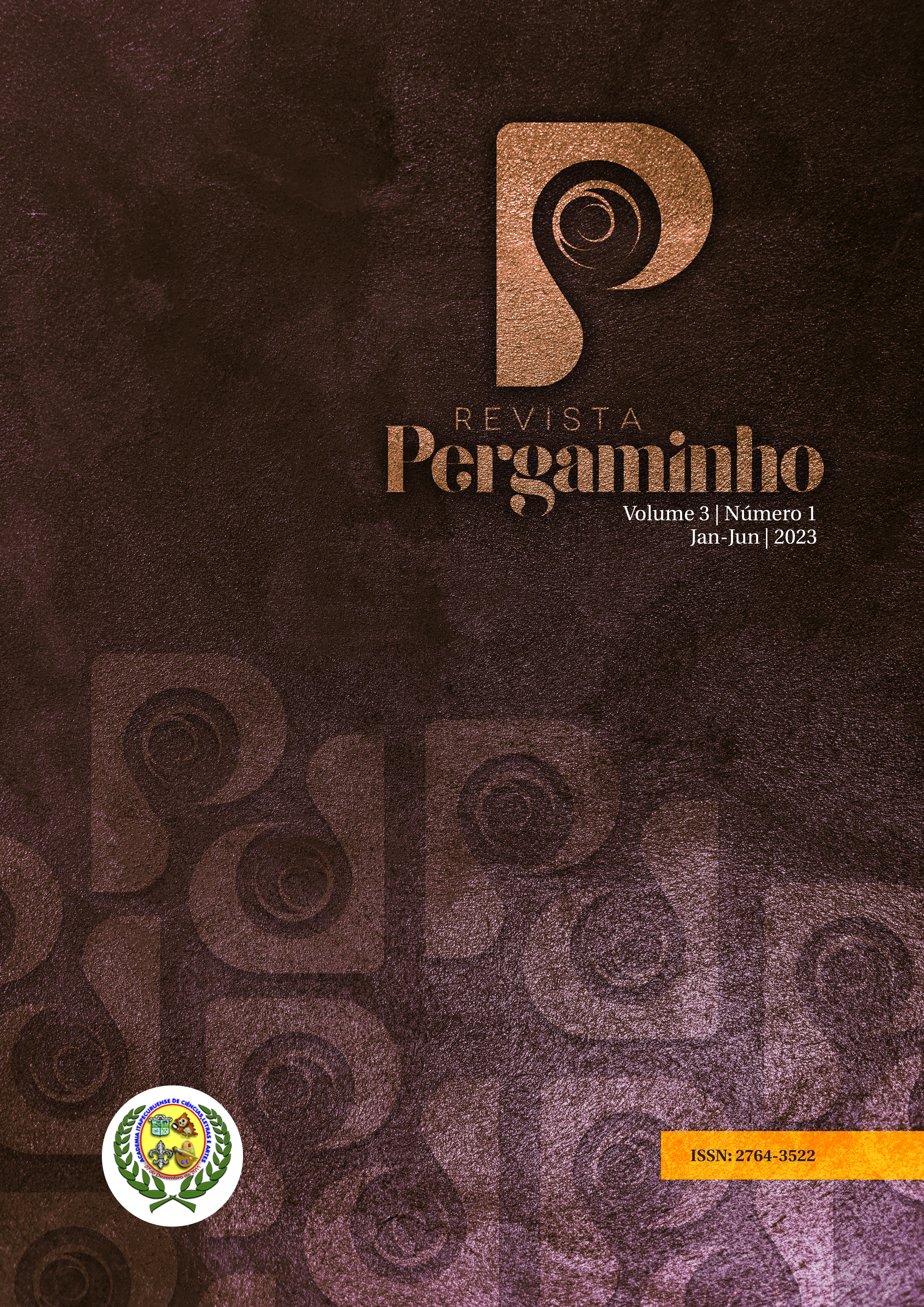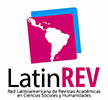Digital technologies at school: using kahoot as a teaching resource
ARK:
https://n2t.net/ark:/35231/pergaminho.v3n1.50Keywords:
Technology, Digital, Literacy, History of Education, KahootAbstract
New technologies have arrived within society so people are always looking for these novelties to consume. And along this path, we, education professionals, seek to bring these new technological trends into our classroom, also seeking to diversify teaching methods, contributing to the learning process of each student. This work aims to show the reader the importance and how it is possible to use a digital platform to assist the teacher in the teaching-learning process. And as the basis of our research, we resorted to some theorists, among them, Sousa, et al. (2015) who will deal with the ease of young people in using TICs and TDICs, Ribeiro (2014) who will bring us the concept of digital information technologies and Ribeiro and Coscarelli (2005) bringing us contributions about digital literacy. As a methodology, we work with teaching classes on the topic of literacy and later we use the digital platform chosen for the application of questions in Quiz format. In the data collection, we observed how students were able to interact in a very meaningful way with the use of these technologies in the classroom, as well as how they managed to fix the content worked through the games produced in Kahoot. And from these researches, we can conclude that the use of digital technologies in the classroom contributes significantly to the teaching-learning process, and enables students and teachers to interact with the digital world and also the development of multiliteracy, which will contribute positively to the growth intellectually and socially.
Downloads
References
ALVES, Taise Araújo da Silva. Tecnologia de informação e comunicação (TIC) nas escolas: da idealização à realidade. Lisboa 2009. Disponível em: https://recil.ensinolusofona.pt/bitstream/10437/1156/1/Taises%20Araujo%20-%20versao%20final%20da%20dissertacao.pdf. Acesso em: 22 ago. 2022.
COELHO, Christianne Coelho de Souza Reinish; FIALHO, Francisco Antonio Pereira. Espaços digitais para melhor aprendizagem. Diálogo Educ. v. 7, n. 22, p. 165-174, Curitiba, set./dez. 2007. Disponível em: http://educa.fcc.org.br/pdf/de/v07n22/v07n22a11.pdf. Acesso em: 15 ago. 2022.
COSCARELLI, C. V.; RIBEIRO, A. E. Letramento digital. Glossário Ceale: termos de alfabetização, leitura e escrita. Belo Horizonte: FaE UFMG, 2014. Disponível em: https://www.ceale.fae.ufmg.br/glossarioceale/verbetes/letramento-digital. Acesso em: 22 nov. 2022.
GARCIA, Fernanda Wolf. A importância do uso das tecnologias no processo de ensino-aprendizagem. Educação a Distância, Batatais, v. 3, n. 1, p. 25-48, jan./dez. 2013. Disponivel em: https://intranet.redeclaretiano.edu.br/download?caminho=upload/cms/revista/sumarios/177.pdf&arquivo=sumario2.pdf. Acesso em: 22 nov. 2022.
Letramento digital. Kahoot, 2022. Disponível em: https://create.kahoot.it/user-reports/live-game/7f375535-bcf5-43b0-bff4-59ff7a4b8e5f/cefdb08e-4c30-4e7a-990c-011e6eb17c0b/1669224930981/summary. Acesso em: 20 nov. 2022.
LÉVY, P. A inteligência coletiva: por uma antropologia do ciberespaço. 4. ed. São Paulo: Loyola, 2003.
LIRA, Marcia. Você sabe o que é Kahoot? Entenda aqui como funciona! B2B Stack. 2021. Disponível em: https://blog.b2bstack.com.br/kahoot/. Acesso em: 18 nov. 2022.
MARTINS, Sandra Mara; BASTOS, Carmen Célia. Função social da escola: premissa para superação. Paraná 2007. Disponível em: http://www.gestaoescolar.diaadia.pr.gov.br/arquivos/File/producoes_pde/artigo_sandra_mara_martins.pdf. Acesso em: 15 nov. 2022.
O que é pix? Gov.br, Brasil 2020. Disponível em: https://www.bcb.gov.br/estabilidadefinanceira/pix. Acesso em: nov. 2022.
OLIVEIRA, F. J. S.; REIS, D. A. F. Uso de tecnologias digitais em pesquisas de opinião: discussões sobre o componente afetivo do letramento estatístico a partir do modelo de Iddo Gal. Revista Brasileira de Educação em Ciências e Educação Matemática, v. 3, n. 2 p. 199-223. Paraná 2019. Disponível em: https://e-revista.unioeste.br/index.php/rebecem/article/download/22449/pdf/84705. Acesso em: 23 nov. 2022.
RIBEIRO, A. E. Tecnologia digital e ensino: breve histórico e seis elementos para a ação. Linguagem & Ensino, Pelotas, v.19, n.2, p. 91-111, CEFET-MG Fapemig jul./dez. 2016. Disponível em: file:///C:/Users/marco/Downloads/15260-52947-1-PB%20(1).pdf. Acesso em: nov. 2022.
RIBEIRO, A. E. Tecnologia digital. In: FRADE, I. C. A. S.; VAL, M. G. C.; BREGUNCI, M. G. C. Glossário Ceale: termos de alfabetização, leitura e escrita. Belo Horizonte: FaE UFMG, 2014. Disponível em: https://www.ceale.fae.ufmg.br/glossarioceale/verbetes/tecnologia-digital. Acesso em: 22 nov. 2022.
SANTOS, Patrícia Basseto; BIZELLI, José Luiz. O Papel dos Games na Construção de Conteúdos Midiáticos Educativos. Intercom, Pernambuco, 2011. Disponível em: http://www.intercom.org.br/papers/nacionais/2011/resumos/R6-1225-1.pdf. Acesso em: 19 nov. 2022.
SILVA, Renildo Franco; CORREA, Emilce Sena. Novas tecnologias e educação: a evolução do processo de ensino e aprendizagem na sociedade contemporânea. Educação & Linguagem, ano 1. nº 1. p. 23‐35. CEARÁ, 2014. Disponível em:https://www.fvj.br/revista/wp-content/uploads/2014/12/2Artigo1.pdf . Acesso em: 15 nov. 2022.
SOUSA, Carlos Ângelo (Org.), et al. Juventudes e Tecnologias: Sociabilidades e Aprendizagens, 1 ed. Liber Livro, Brasília:, 2015. Disponível em: https://socialeducation.files.wordpress.com/2016/03/juventudes-e-tecnologias-_site.pdf. Acesso em: nov. 2022.
VARELA, Luíz. O Que é o Kahoot? Educa Tech. 31 de janeiro de 2019. Disponível em: https://www.educatech.pt/kahoot/. Acesso em: 20 nov. 2022.
Downloads
Published
How to Cite
Issue
Section
License
Copyright (c) 2024 Marco Antonio da Silva de Souza

This work is licensed under a Creative Commons Attribution-NonCommercial 4.0 International License.


